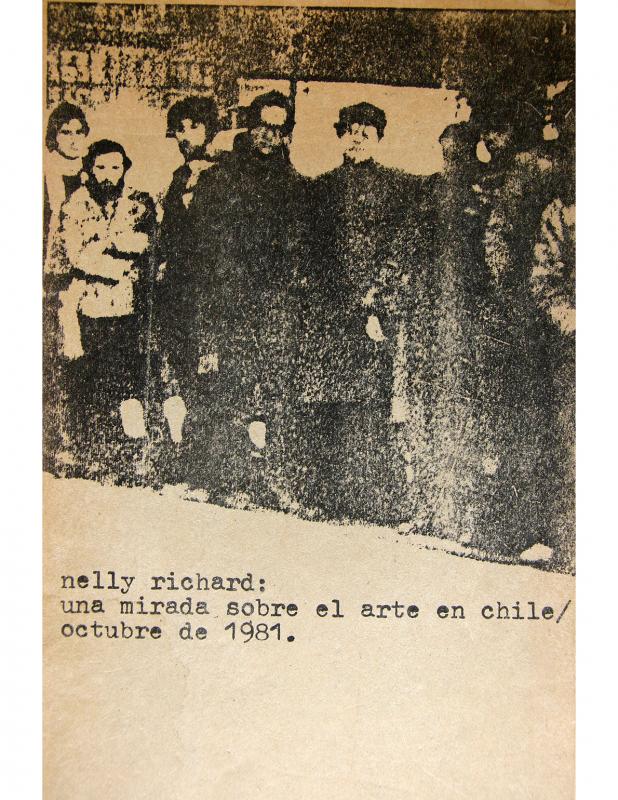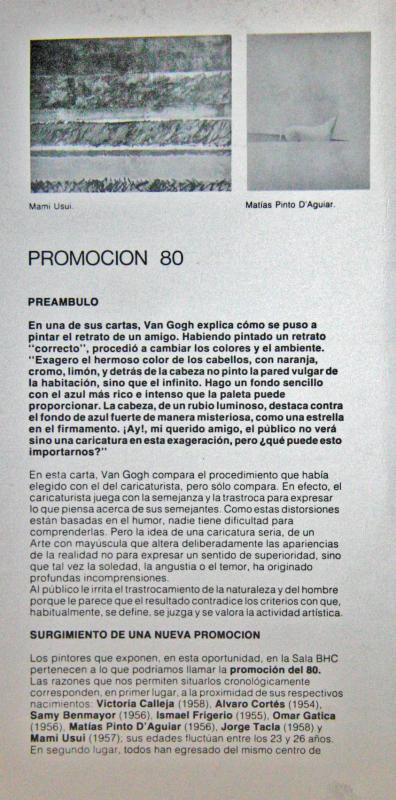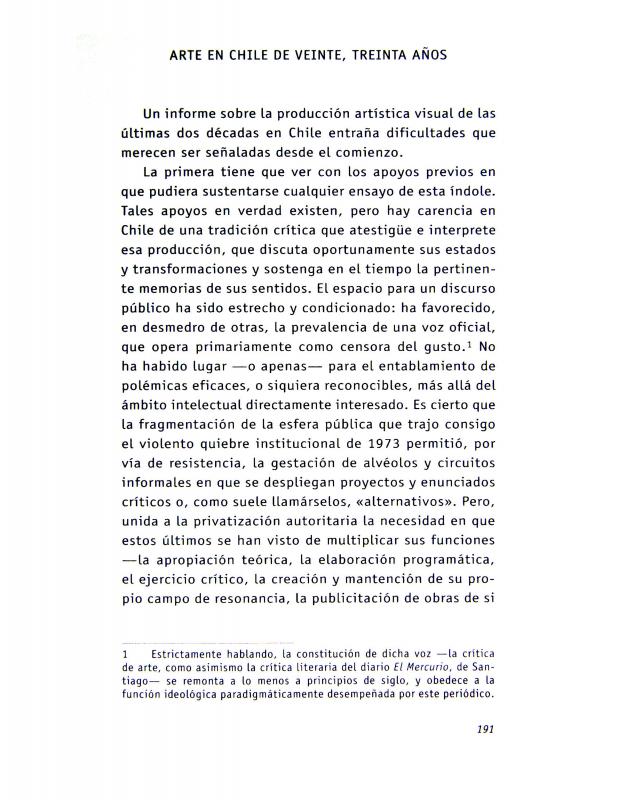The art historians Milan Ivelic (b. 1935) and Gaspar Galaz (b. 1941) developed this questionnaire to be used in conversations with four Chilean artists referred to as “our most distinguished painters.” The four are Carmen Aldunate (b. 1940), Rodolfo Opazo (b. 1935), Ricardo Yrarrázaval (b. 1931), and Mario Carreño (1913–1999), a Cuban painter who became a Chilean citizen in 1969. The interviews took place three years after the 1973 coup d’état, at a time when institutions had been gutted in all areas of Chilean society, including the art world. A number of art galleries opened in the wake of the military overthrow of the government, providing alternative spaces and recreating an art environment that was never homogenous. There was always, in fact, a convergence of different trends—there was “experimentation” that paved the way for contemporary art, as in the Escena de Avanzada. Painting took many forms: it was part of the Avanzada movement but was also a medium used by artists from previous generations, like the ones who were included in these interviews, and by the new generations of young artists who reclaimed painting from neo-expressionist or international trends in the early 1980s. [For more information about these trends, see the following in the ICAA Digital Archive: “Una mirada sobre el arte en Chile” (doc. no. 730121) by Nelly Richard and “Promoción 80” (doc. no. 740347) by Milan Ivelic.]
After the coup the Museo Nacional de Bellas Artes was reorganized to give priority to painting. The Ministerio de Educación’s Departamento de Extensión Cultural orchestrated events devoted to contemporary Chilean painting in which the four artists chosen for these interviews, among others, were included. This document implies that painting, at that time, tended to be an expression of the artist’s subjectivity; the creative act was understood to connote mystical ideas, an inner reality, and/or the need to express personal experiences.
According to a widely circulated narrative about the history of Chilean art, the Grupo Signo (1961–62) was responsible for the modernization of painting during the 1960s. But the painters featured in these interviews were working at that same time and were producing their own kind of art that was not aligned with any particular trend or school. According to what Ivelic and Galaz wrote in their book Chile, Arte Actual (Chile, Contemporary Art) (1988), Mario Carreño’s painting in the 1960s moved away from geometric abstraction and focused on the human figure from a transcendentalist perspective. Rodolfo Opazo and Ricardo Yrarrázaval were working along those same lines in their painting. The youngest of the four artists interviewed was Carmen Aldunate, whose work featured line-based illustrations of women rendered with clean brush strokes. [The text that identifies the Grupo Signo as having a modernizing influence on painting is “Arte en Chile de veinte, treinta años” (doc. no. 745095) by Pablo Oyarzún.]



